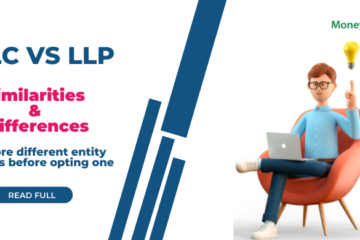A business structure is a formal organization of people and resources to carry out business goals. The basic purpose is that it makes the company more organized, profitable, and efficient. All businesses use one form of organization or another to meet the needs of their customers, clients, employees, and stockholders.
Here in this article, we’re going to dig out different business structures that are commonly used in the world of business such as Limited Liability Company, Corporation, partnership, and sole proprietorship, etc.
Business Structures
As discussed before, there are many different types of business structures, some are more appropriate for certain businesses than others. Each has its own advantages and disadvantages that must be considered before making a decision on which structure to use.
Let us explore one by one:
Corporation
This state-chartered organization acts as a separate legal entity and is the most structured business entity. Business activities are restricted to those listed in the corporate charter.
Corporations may elect to file as a C-Corporation or S-Corporation. The differences are defined by the tax filing status as determined by the chapters in the Internal Revenue Code.
- C-corporation – pays federal and state income taxes on earnings. When the earnings are distributed to the shareholders as dividends, the earnings are taxed again. Double taxation is a big drawback of C-corporations.
- S-corporation – have the same legal attributes as the C-corporation, however, the corporation does not pay income taxes on earnings, rather, the shareholder pays income tax on dividends on their personal income tax return.
- Advantages: Liability is limited to the amount owners have paid into their share of stock, and the corporation’s continuity is unaffected by the death or transfer of shares by any of the owners. Corporations have perpetual continuity unless otherwise specified in the Certificate of Incorporation. As a separate legal entity, corporations may own property, sue, and be sued in the corporate name.
- Disadvantages: Extensive record keeping, close regulation, and double taxation (taxes on profits and taxes on dividends paid to the owners).
Nonprofit Corporation
A nonprofit corporation is a legal entity that is formed as a nonstock corporation with the intent to not realize a profit but is established for a religious, charitable, educational, literary, or scientific purpose.
Qualifying nonprofit corporations will be granted tax-exempt status by both federal and state authorities.
Limited Liability Company (LLC)
A separate legal entity, the LLC is a hybrid between a partnership and a corporation, combining the limited liability advantage of a corporation with the tax status of a sole proprietor or partnership. Owners of the LLC are called members.
- Advantages: Similar to the partnership entities, the LLC is governed by an operating agreement, or in the absence of one, by the Connecticut Limited Liability Company Act. The LLC may be formed by one or more members. As a separate legal entity, LLCs may own property, sue, and be sued in LLC’s name. Managers of an LLC as elected by the members may be in the form of a person or other entity. Unless otherwise specified by the Articles of Organization, LLCs enjoy perpetual continuity similarly to a corporation.
- Disadvantages: Since an LLC is a legal entity, the formation of an LLC requires more legal documentation than in a general partnership or sole proprietorship
Limited Liability Partnership
A separate legal entity, an LLP provides liability protection for all general partners as well as management rights in the business.
Most commonly used in professional practices, an LLP offers, in most cases, the same limited liability enjoyed by a corporation, but at the same time, it is a flow-through entity for federal and Connecticut tax purposes, just like a partnership.
LLPs are legal entities formed with the Connecticut Secretary of State.
- Advantages: LLPs provide a legal structure for the establishment of the business. From a capital investment standpoint, limited partners are shielded from the liability in that their liability is dependent upon the amount of capital invested. In addition, dividends distributed to all partners are reported on the partners’ personal income tax returns. As in any partnership, an LLP must draft a partnership agreement, which governs how the business is operated. There is no requirement to set a termination date of the partnership agreement. As a separate legal entity, LLP’s may own property, sue, and be sued in LLP’s name.
- Disadvantages: Since a LLP is a legal entity, the formation of an LLP requires more legal documentation than in a general partnership. If an LLP drops or loses a partner, the business is automatically deemed dissolved.
Limited Partnership
A separate legal entity, this type of business includes a general partner and one or more limited partners who invest capital into the partnership, but do not take part in the daily operation or management of the business.
The limited partners limit their amount of liability to the amount of capital invested in the partnership.
The general partner shoulders the personal liability for the debts and obligations of the partnership.
Business operations are governed, unless otherwise specified in a written agreement, by a majority vote of voting partners. LPs are legal entities formed with the Connecticut Secretary of State.
- Advantages: LPs provide a legal structure to the establishment of the business. From a capital investment standpoint, limited partners are shielded from liability in that their liability is dependent upon the amount of capital invested. In addition, dividends distributed to all partners are reported on the partners’ personal income tax returns. There are no restrictions as to the number of dividends that the general partners may receive from the business. General partners of an LP may be in the form of another person or company. As a separate legal entity, LP may own property, sue, and be sued in LP’s name.
- Disadvantages: In an LP there must be at least one general partner and it is the general partner(s) that incur unlimited liability. As in any partnership, an LP must draft a partnership agreement, which governs how the business is operated. In an LP the partnership agreement must state a date of termination. Since an LP is a legal entity, the formation of an LP requires more legal documentation than in a general partnership.
General Partnership
Allows two or more people to share profits and liabilities. A general partnership is similar to a sole proprietorship, except that two or more parties are involved.
In a business partnership, the parties that join forces could be individuals, corporations, trusts, other partnerships, or a combination of all of the above.
- Advantages: Advantages are that it is easy to establish, can draw upon the financial and managerial strength of all the partners, and the profits are not directly taxed.
- Disadvantages: Some disadvantages are the unlimited personal liability of the partners for the firm’s debts and liabilities, termination of the business with the death of a partner (in the absence of advanced planning for business continuation), and the fact that any one of the partners can commit the firm to obligations. It is important to understand that a general partnership does not protect its partners from personal liability with respect to claims against the partnership. The partnership is formed by an agreement entered into by each partner. This agreement may be informal, but it is advisable to have a written agreement drawn up between all parties.
Sole Proprietor
A sole proprietorship by definition means “one owner”. The owner assumes all responsibilities for the business, including assets and liabilities.
Business income is taxed as personal income. Most small businesses operate as sole proprietorships, this being the simplest form of organization and allowing the single owner to have sole control and responsibility.
The business may use a trading name, but the business does not have a separate legal existence apart from its owner under state law.
Trade names (often referred to as fictitious names, DBA or doing business as) must register with the town or city clerk in the town or city where the business is located.
- Advantages: Some advantages of the sole proprietorship are less paperwork, minimal legal restrictions, owner retention of all profits, and ease in discontinuing the business. In most cases, a sole proprietorship is not required to obtain an Employer Identification Number (EIN) from the Internal Revenue Service unless it has employees. There is no need to file a separate income tax return for the proprietorship because the activity is reported on the owner’s federal and individual income tax returns. Since a self-employed person is not considered an employee, there is no provision to withhold payroll taxes to cover federal, state, and Social Security tax obligations. If you are a self-employed sole proprietor, you must make quarterly estimated payments to provide for these tax liabilities.
- Disadvantages: Disadvantages include unlimited personal liability for all debts and liabilities of the business, limited ability to raise capital, and termination of the business upon the owner’s death. You should note that a small business owner might very well select the sole proprietorship to begin, and later, he or she may decide to form a different business type such as a limited liability company or corporation.

Alfie Wilson, Esq., is a legal content writer with expertise in business formation, criminal law, veterans disability, family law, DUI law, personal injury, animal welfare, and legal writing. He holds a J.D. from Emory University School of Law and has experience in appellate advocacy and regulatory matters. Alfie’s passion lies in breaking down complex legal topics for a non-lawyer audience. He currently writes for law firms and non-profits on various issues and resides in Arlington, Virginia.








